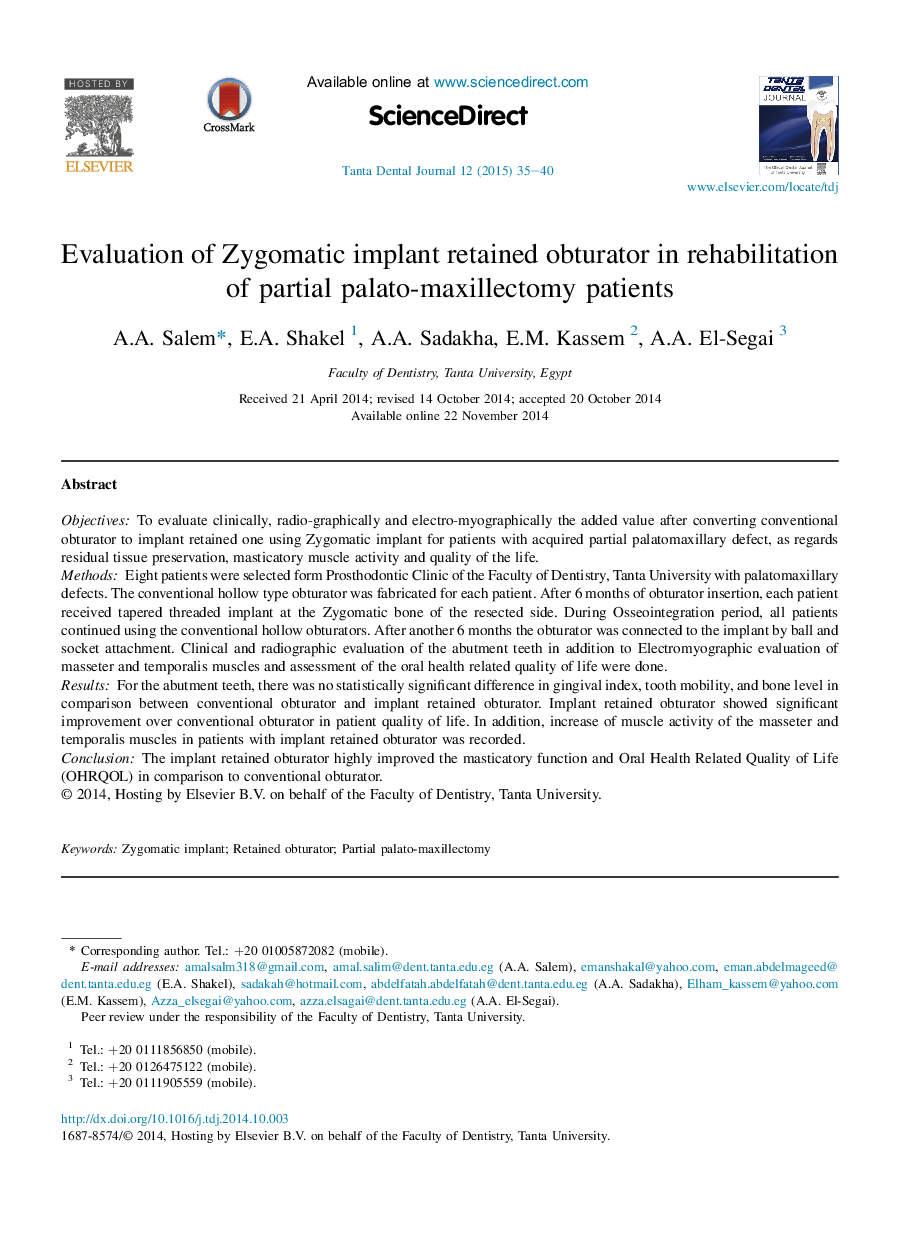| Article ID | Journal | Published Year | Pages | File Type |
|---|---|---|---|---|
| 3179614 | Tanta Dental Journal | 2015 | 6 Pages |
ObjectivesTo evaluate clinically, radio-graphically and electro-myographically the added value after converting conventional obturator to implant retained one using Zygomatic implant for patients with acquired partial palatomaxillary defect, as regards residual tissue preservation, masticatory muscle activity and quality of the life.MethodsEight patients were selected form Prosthodontic Clinic of the Faculty of Dentistry, Tanta University with palatomaxillary defects. The conventional hollow type obturator was fabricated for each patient. After 6 months of obturator insertion, each patient received tapered threaded implant at the Zygomatic bone of the resected side. During Osseointegration period, all patients continued using the conventional hollow obturators. After another 6 months the obturator was connected to the implant by ball and socket attachment. Clinical and radiographic evaluation of the abutment teeth in addition to Electromyographic evaluation of masseter and temporalis muscles and assessment of the oral health related quality of life were done.ResultsFor the abutment teeth, there was no statistically significant difference in gingival index, tooth mobility, and bone level in comparison between conventional obturator and implant retained obturator. Implant retained obturator showed significant improvement over conventional obturator in patient quality of life. In addition, increase of muscle activity of the masseter and temporalis muscles in patients with implant retained obturator was recorded.ConclusionThe implant retained obturator highly improved the masticatory function and Oral Health Related Quality of Life (OHRQOL) in comparison to conventional obturator.
